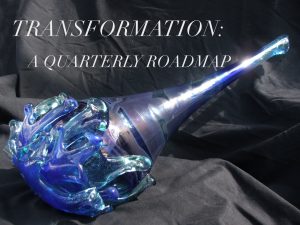
Photo: “First Encounter with Fire” by G. Michael Smith
William Bergquist and Agnes Mura
Our memory of mechanistic organization of the Twentieth Century is that the organization ran like a pendulum. A pendulum epitomizes elegance and simplicity in motion. We can disrupt the course of the pendulum by giving it an added push or by bumping into it and slowing it down. In either case, the pendulum will adjust its course and continue swinging back and forth at a greater or lesser magnitude. The pendulum, in modern systems theory terms, will always return to a balance, retaining its basic form or pathway. Systems theorists suggest that organizations tend to return to their previous form and function even with disruptions and interference. While today’s organizations may seem to be chaotic and in disarray, we may merely be witnessing a long term process of homeostatic readjustment and an ultimate return to a former state or style of pendulum functioning.
Is this mechanistic analogy to the pendulum still accurate for Twenty First Century organizations? Ilya Prigogine, a Nobel Prize winning scientist, suggests that many processes in nature (including perhaps those exhibited by organizations) don’t match very well with the mechanistic world of the pendulum. Rather, the world is more likely to resemble a fire. Fire is a perplexing problem in the history of science. Prigogine notes that modern scientists, in an effort to create a coherent mechanistic model of the world, ignore the complex, transformative processes of fire, concentrating only on the capacity to generate heat. Fire became a heat machine for scientists and was treated as a mechanistic process.

Fire is an irreversible process: it consumes something that cannot be reconstructed. Those of us who live in the San Francisco Bay Area were tragically attuned to this phenomenon during the early 1990s, as we watched the irreversible destruction of our neighbor’s homes in the Oakland Firestorm. These homes could never be “unburned.” There would never be a readjustment in the community that was destroyed by the fire. There could only be the construction of new homes and a new community. Many other processes of change and transformation are similarly irreversible. Avalanches can never be undone, nor can Pandora’s Box ever be closed once the lid is opened. We release organizational truths in moments of frustration or anger and can never return them to the Box. We tentatively consider a change in organizational structure, but the word gets out and we are soon stuck with this change whether we like it or not. We become bound up in complex and paradoxical relationships and can’t undo them—except by divorce. The equilibrium has been disturbed, chaos often follows, and there is no returning home as the same person we were when we left. Time moves in one direction and cannot be reversed.
Download Article 1K Club



















